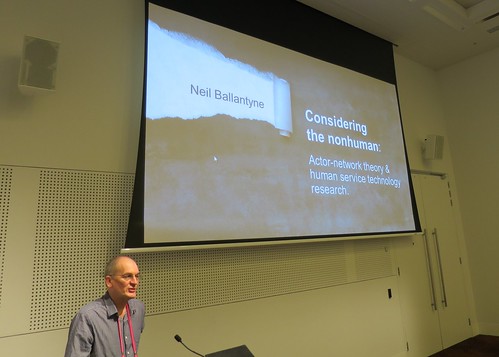Paper presented at #husITa14 in Melbourne, Australia, July 2014.
Presenter
Neil Ballantyne (Learning Designs, New Zealand).
Abstract
Actor-network theory (ANT) is a material semiotic analytical framework developed during the 1980s in the field of science and technology studies (STS). It is a constructivist perspective and can be considered a form of sociotechnical systems theory, but with a radical difference: it assumes that sociotechnical systems are heterogeneous networks enacted in webs of relations between human and nonhuman actors. From this point of view the social and material worlds, nature and culture, people and technology are deeply entangled.
Since its origins in STS, ANT has disseminated widely and its concepts and sensibilities have informed studies of information systems in health informatics, education and beyond. It has also been used in environmental studies, human geography, sustainable technology, agriculture and architecture. Indeed ANT is capable of contributing to any disciplinary domain where the relationship between humans and the material world is germane. Yet, with a few notable exceptions, ANT has seldom caught the attention of researchers in the field of human service technology. This paper will discuss the distinctive characteristics of ANT, explore its methodological implications, and consider the contribution it might make to research enquiries in the field of human service technology.
Powerpoint
[slideshare id=36933351&doc=sat2170800neilballantyne-140713184541-phpapp02]
Back to programme

